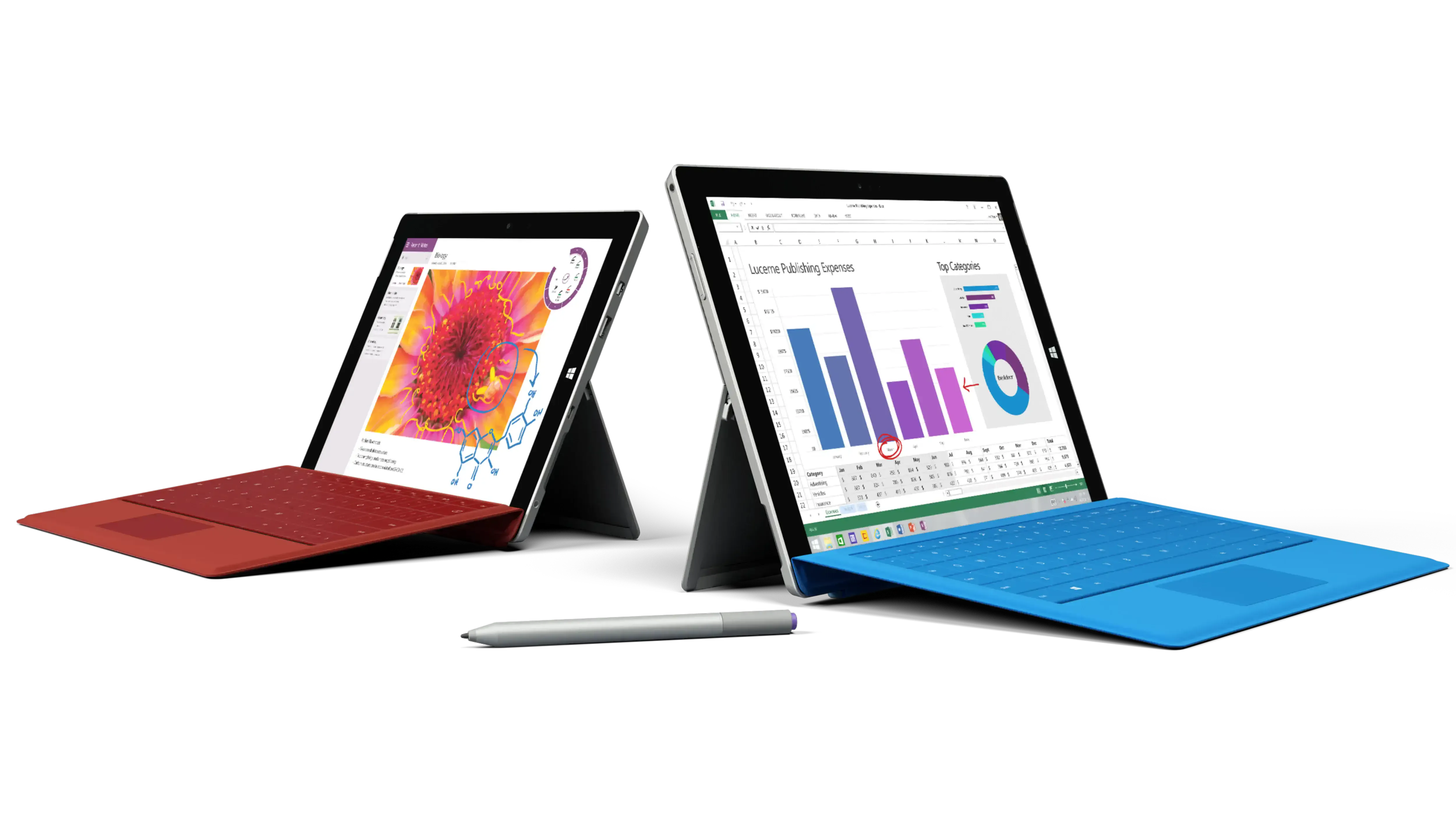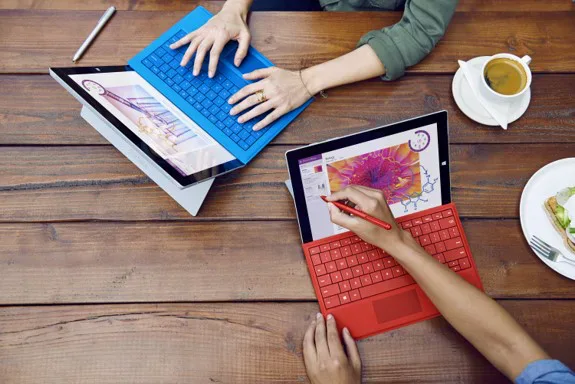Research Example: Diary Study & Contextual Visits

Background
At Microsoft on the Surface hardware team, I conducted generative research to inform future Surface devices using Surface 3 tablets. In a nutshell, the Surface team wanted a deeper understanding of how real people were using Surface tablets in the wild, how they incorporated these devices into their daily lives.
Note: Nondisclosure Agreements are serious business. All in-development product images and other artifacts from my research are confidential to Microsoft. I will not be sharing real raw data, photos of real participants, real examples of reports, or examples of impact that include content or features that did not ship in some form.
Example Research Questions
- What kinds of tasks do people try to do with the Surface 3? What programs do they use?
- Where do they use their Surface?
- How do they hold it or where do they set it? Do they use the kickstand?
- Do they use the Type Cover? What happens when the fabric gets dirty?
- Do they use the Pen? If so, for what?
- Are there things they wished they could do with the Surface that they were unable to do?
Methodology
10 participants were a mix of students, professionals, and stay-at-home parents.
There were three parts to this study:
- Unboxing and first-run experience: Participants came to the Microsoft Research Lab, received a Surface 3 and accessories, unboxed and set it up, and gave first impressions. This was primarily to make sure all participants were properly set up to use the devices and had the instructions they needed for the rest of their participation, but also an opportunity for initial feedback.
- Diary study: Participants were asked to use the Surface as though it were their own device for three weeks, and submit “diary” entries twice a week. This included prompts inquiring how, when, and where they used it, what programs or apps they were using, what was working well, and if anything wasn’t working for them.
- Contextual inquiry: After three weeks at the conclusion of the diary study, I visited each participant at their home/dorm for show and tell, along with another researcher to help take photos and notes. This enabled some direct observation of behaviors, postures, grips, and other physical interactions with the hardware.
Outcome
Here is a sample of some general findings:
- Everyone loved the Surface’s portability – thin and light!
- People used it to take notes in class, surf the web, watch Netflix and YouTube in bed, do PowerPoint presentations, and many other things both fun and productive.
- Some people really liked the look and feel but would have preferred a traditional laptop form factor. This helped validate the Surface Laptop in development at the time.
- A few people needed more processing power for school work. In this case the study used Surface 3 devices (the lower-powered version), so it was important for box descriptions and marketing materials to clearly distinguish between the Surface Pro and non-Pro versions.
- People took their devices to class, to the park, and all sorts of places. They weren’t sure what to do if the fabric of the Type Cover got dirty. Could they clean it? With what? It would be helpful to include cleaning instructions with the devices.
- People “held” the Surface in creative ways, such as setting the open kickstand on top of their bent knees while lounging around.

